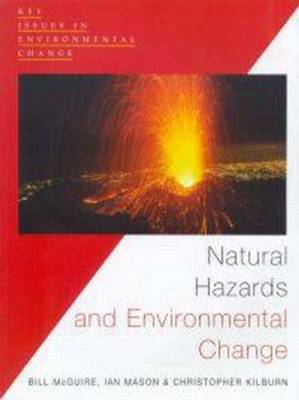Key Issues in Environmental Change
1 total work
Natural Hazards and Environmental Change
by Ian Mason, Bill McGuire, and Christopher Kilburn
Published 2 January 2002
We are at a critical period in our planet's history: global warming is real and it is happening now. With a few exceptions most scientists now believe that the global warming of recent decades is a function of human activities and the rising level of greenhouse gases accumulating in the atmosphere as a result. But such dynamic periods of environmental change have a destabilising impact, encouraging the onslaught of hazardous phenomena.
'Natural Hazards and Environmental Change' highlights and critically evaluates the accumulating evidence for an intimate link between natural hazards and environmental change. Surveying a unique collection of themes, this link is examined from two viewpoints: first, how environmental change can contribute to an increased level of hazardous natural phenomenon, and second how natural hazards may themselves lead to environmental change on a local, regional or even global scale. Through exploring the often complex and dynamic relationships between environmental change and the frequency and severity of hazards (such as floods, windstorms, landslides, asteroid and comet impacts and volcanic eruptions), the book also introduces the reader to some of the more speculative aspects of the relationship: how, for example, variations in sea level are linked to the level of volcanic activity and how a warmer, wetter climate might lead to landslides and tsunami formation at oceanic islands. With dramatically rising temperatures and sea levels now inevitable, as well as a growing global population that is becoming increasingly vulnerable to hazardous geophysical phenomena, the world of the 21st century is likely to be an increasingly dangerous one.
Assessing past effects, evaluating recent trends and addressing extrapolations of current geophysical models, 'Natural Hazards and Environmental Change' incorporates cutting-edge research to provide an invaluable guide to the impact of natural hazards now, and in the future.
'Natural Hazards and Environmental Change' highlights and critically evaluates the accumulating evidence for an intimate link between natural hazards and environmental change. Surveying a unique collection of themes, this link is examined from two viewpoints: first, how environmental change can contribute to an increased level of hazardous natural phenomenon, and second how natural hazards may themselves lead to environmental change on a local, regional or even global scale. Through exploring the often complex and dynamic relationships between environmental change and the frequency and severity of hazards (such as floods, windstorms, landslides, asteroid and comet impacts and volcanic eruptions), the book also introduces the reader to some of the more speculative aspects of the relationship: how, for example, variations in sea level are linked to the level of volcanic activity and how a warmer, wetter climate might lead to landslides and tsunami formation at oceanic islands. With dramatically rising temperatures and sea levels now inevitable, as well as a growing global population that is becoming increasingly vulnerable to hazardous geophysical phenomena, the world of the 21st century is likely to be an increasingly dangerous one.
Assessing past effects, evaluating recent trends and addressing extrapolations of current geophysical models, 'Natural Hazards and Environmental Change' incorporates cutting-edge research to provide an invaluable guide to the impact of natural hazards now, and in the future.
